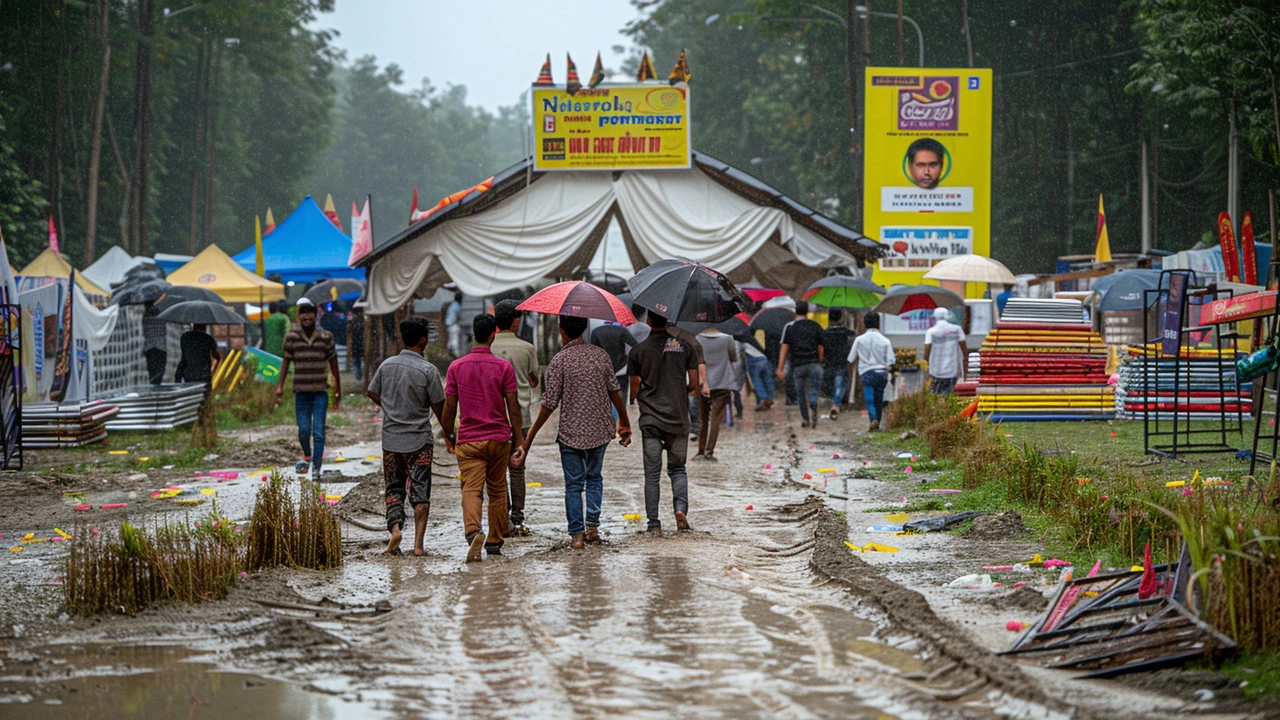The Devastating Hathras Stampede: What Happened?
The serene village of Phulrai in Hathras district, Uttar Pradesh, was the site of a tragic stampede during a religious event led by the self-styled godman, Narayan Sakar Hari, known to his followers as Bhole Baba. The calamity occurred around 3:30 pm, and by its grim conclusion, 121 lives were lost, with many more injured. This tragedy sent shockwaves across the nation, with many questioning how a spiritual gathering could turn into such a deadly event.
During the religious gathering, a vast number of devotees converged to witness Bhole Baba, a former policeman turned spiritual leader who had amassed a considerable following, particularly among low-income Dalit families. It's reported that the stampede may have been triggered by a rush of devotees eager to collect the 'soil' from Baba's feet, believed to hold divine blessings. What should have been a moment of devotion spiraled into chaos due to poor crowd management and inadequate security measures.
Event Management and Security Lapses
One of the critical factors that contributed to the stampede was the glaring lack of proper event management and security. Organizers seemingly underestimated the number of attendees, leading to an overcrowded and uncontrollable situation. Witnesses described a scene of panic as people pushed and shoved to get closer to Bhole Baba, with many losing their footwear and belongings in the ensuing melee.
Despite the large gathering, there were insufficient measures to control the crowd or provide medical aid promptly. Emergency services were overwhelmed, and the delay in their response only exacerbated the chaos. Eyewitness accounts highlighted the absence of basic amenities like barricades or a public address system to relay important instructions, which could have potentially prevented or mitigated the disaster.
The Role of Bhole Baba and Administrative Failures
Bhole Baba, whose spiritual name is Narayan Sakar Hari, had gained prominence as a godman, particularly among the lesser privileged sections of society. His promise of spiritual salvation and miracles drew hundreds of loyal followers. However, his role in the event and the administrative response to the tragedy have come under intense scrutiny.
Notably, Bhole Baba was not named in the First Information Report (FIR) filed by the authorities, a decision that has raised many eyebrows. Critics argue that this points to a potential oversight or favoritism, questioning why the primary figure orchestrating the event was not held accountable. On the other hand, some suggest that Bhole Baba's influence and connections might have shielded him from immediate legal repercussions.
Delayed Media Response and Criticism
Adding to the tragedy was the media's delayed and often insensitive coverage of the event. Despite the severity of the incident, most television news channels chose to continue their live broadcast of Prime Minister Narendra Modi's Lok Sabha speech, only turning their attention to the stampede hours later. This delay in coverage sparked outrage among the public and media watchdogs, who condemned the lack of empathy and urgency in reporting such a significant catastrophe.
The decision of news channels to prioritize political coverage over the humanitarian crisis unfolding in Hathras was seen as a grave lapse in journalistic ethics. The media's role in providing timely and compassionate coverage is crucial, especially during emergencies when the public relies on accurate information. Instead, many felt that the delay reflected a disconnect between the media and the real issues impacting the common populace.
Ongoing Investigations and Public Outcry
As the dust settles, investigations into the stampede's causes and the roles of various parties continue. Questions remain about the organization of the event, the adequacy of security measures, and why Bhole Baba has not been held accountable. The administration's response, or lack thereof, has been a focal point of frustration for many affected families, who are still grappling with the loss of their loved ones.
There has also been a groundswell of public outcry calling for stricter regulations and accountability for large-scale religious gatherings. Proposed measures include mandatory safety protocols, better crowd control, and the presence of emergency services at such events. These calls for change aim to prevent the recurrence of such heartbreaking incidents and ensure the safety and well-being of devotees who gather in search of spiritual solace.
Reflecting on the Tragedy
The Hathras stampede is a solemn reminder of the delicate balance between faith and safety. While spiritual events hold immense significance for many, it is imperative that they are conducted with utmost regard for the safety and security of attendees. The incident underlines the need for meticulous planning, robust security measures, and a responsive administrative framework to handle large crowds.
Moreover, the role of the media in such situations cannot be overstated. Timely and empathetic reporting not only informs the public but also ensures that the gravity of the situation is acknowledged and addressed by authorities. The Hathras stampede calls for introspection within media houses to prioritize humanitarian concerns over competitive reporting.
As investigations proceed and reforms are considered, the memory of those who lost their lives in this tragic event must serve as a catalyst for change. The hope is that lessons learned from this incident will pave the way for safer and more considerate handling of religious gatherings, ensuring that such a tragedy never occurs again.







Write a comment